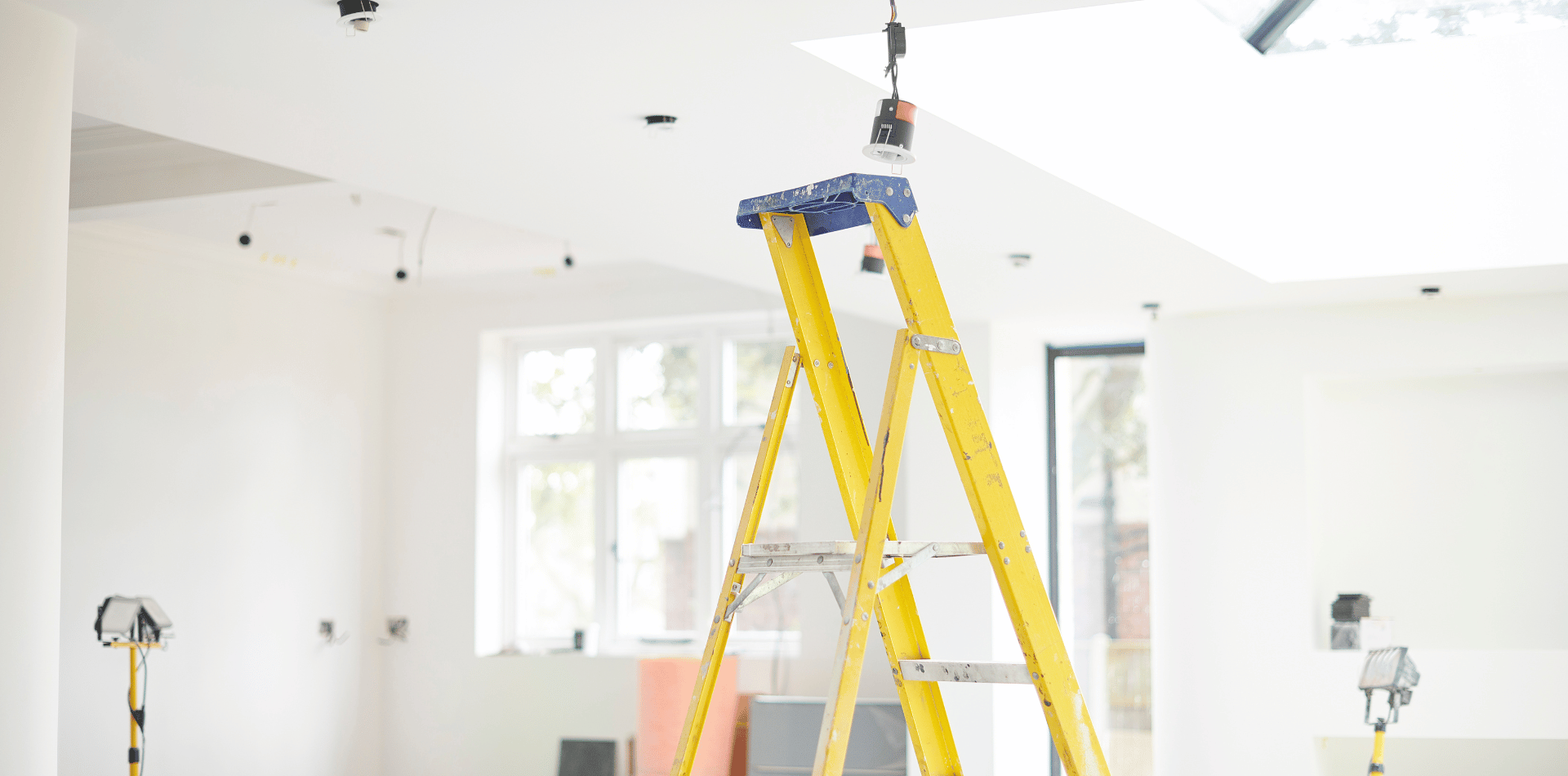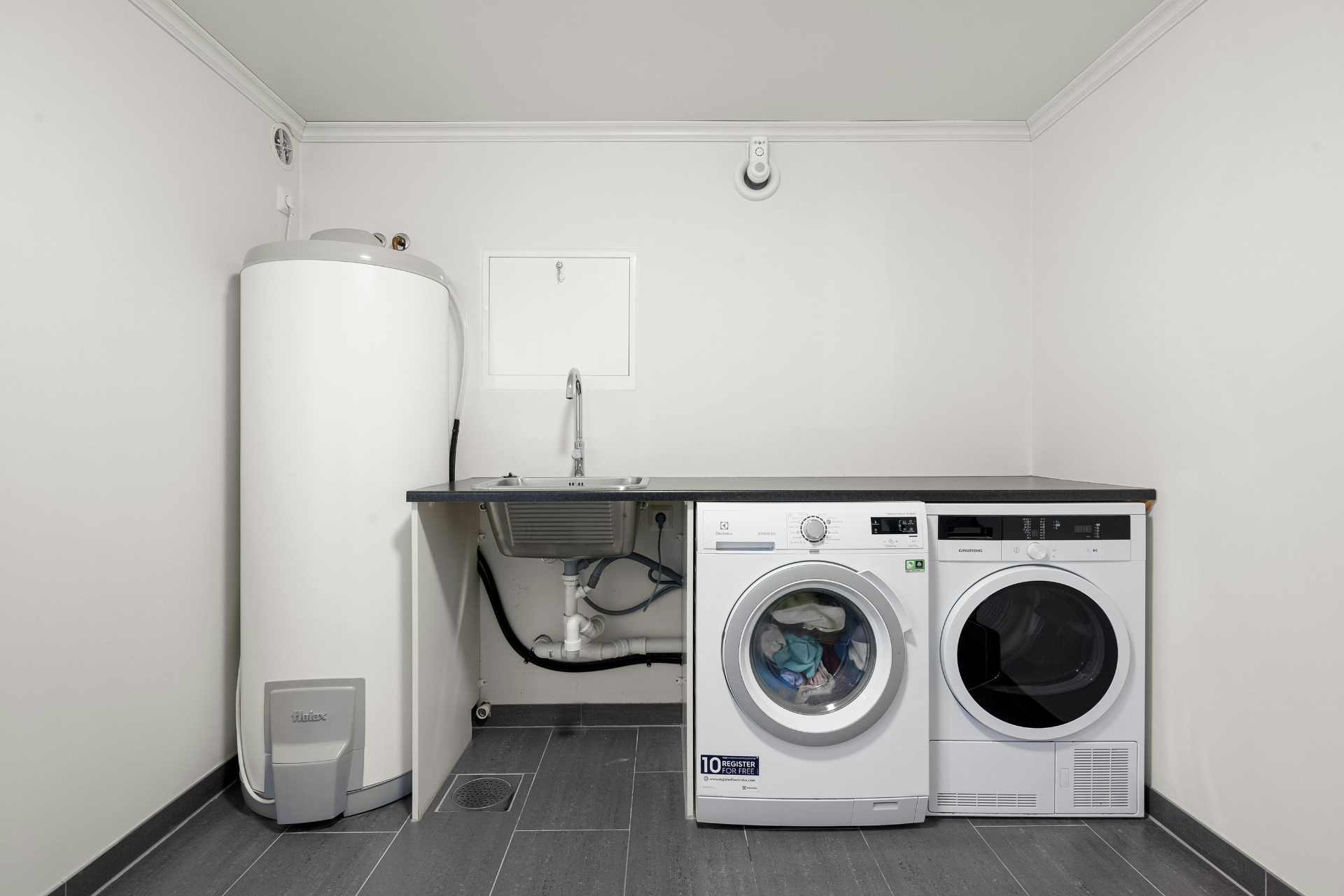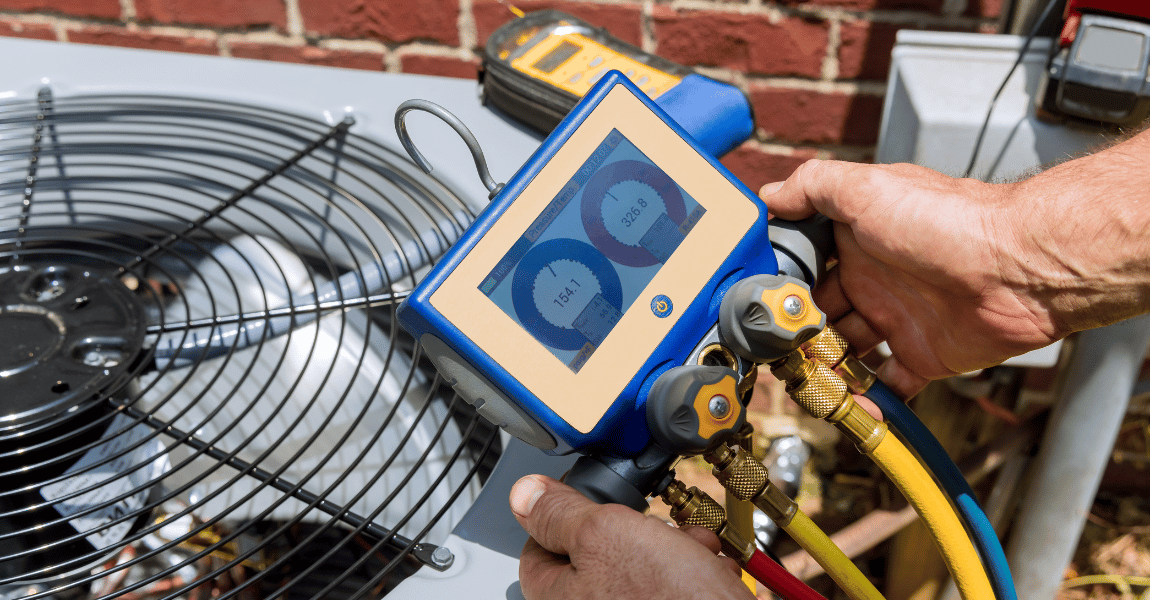When should I re-wire my house
Re-wiring my House.

In the journey of homeownership, few projects loom as large and as daunting as the prospect of re-wiring your house, yet the potential benefits promise to redefine comfort, safety, and efficiency.
The decision to embark on this substantial investment is not one to be taken lightly. It requires a deep look into the current state of your home’s electrical system, a thorough understanding of what re-wiring entails, and a clear vision of the expected outcomes.
Here we aim to unravel the complexities surrounding the process, offering insights into when it's necessary, what it involves, and most importantly, whether it's worth the investment.
The Necessity of Re-wiring
Understanding the Need
Recognising the need for re-wiring begins with identifying the signs of outdated or unsafe electrical systems that can no longer support modern living demands. Flickering lights, frequent breaker trips, and the use of extension cords as a permanent solution are just the tip of the iceberg. These symptoms signal that your home's electrical system is struggling to keep up, posing not just an inconvenience but a potential safety risk.
Safety Concerns Addressed by Re-wiring
Beyond convenience, the primary concern that necessitates re-wiring is safety; outdated wiring is a latent hazard, hidden within the walls but potentially life-threatening. Electrical fires are often attributed to overloaded circuits and aging wiring unable to handle current demands. Re-wiring eliminates these risks, replacing old, deteriorating wires with new, safe, and compliant materials.
Evaluating Your Home's Electrical Needs
As technology advances and our reliance on electronic devices increases, evaluating your home’s current and future electrical needs becomes imperative to ensure it can handle the load. This evaluation should consider not only your current usage but also potential future demands. An electrical system that supports today's technology and lifestyle can vastly improve your home's functionality and future-proof your living space.

The Investment: Costs and Benefits
Understanding the Costs of Re-wiring Your House
The cost of re-wiring your house can be substantial, varying widely based on the size of your home, the complexity of the job, and regional labour rates. Generally, you can expect to encounter costs ranging from a few thousand dollars for a small, straightforward project to tens of thousands for a large home or one with complex requirements. While this might seem steep, it's crucial to consider this investment in light of the benefits and long-term savings it brings.
Factors Influencing the Cost
- Size of the Home: The larger your home, the more materials and labour will be required, directly impacting the cost. Each room adds to the number of outlets, switches, and fixtures that need attention, not to mention the longer runs of wiring that will be necessary.
- Age and Condition of Current Wiring: Older homes, especially those with deteriorating wiring, may require more extensive work to bring them up to current standards. This can include not only replacing wires but also upgrading panels, outlets, and switches to handle modern electrical loads.
- Accessibility: The ease with which electricians can access old wiring plays a significant role in the project's cost. Homes with crawl spaces, attics, and removable panels might see lower costs than those where walls must be opened up to access wiring.
- Upgrades and Additions: If you're adding new features like smart home technology, dedicated circuits for high-powered appliances, or additional outlets, this will increase the project's scope and cost.
- Regional Labour Rates: Labour costs can vary significantly depending on where you live. Urban areas with higher costs of living typically see higher rates for electricians' work than rural areas.
- Permits and Inspections: The cost of necessary permits and subsequent inspections required to ensure the work meets local building codes can also add to the total expense.
Cost Breakdown
- Materials: This includes wiring, panels, outlets, switches, and other fixtures. High-quality materials may have higher upfront costs but can offer better safety and durability.
- Labour: Labour is often the largest portion of the cost. This can vary depending on the electricians' experience, the project's complexity, and the aforementioned regional factors.
- Permits and Inspections: While varying by location, these necessary legal steps ensure your re-wiring project is up to code and can add several hundred to a few thousand dollars to your project.
- Miscellaneous: Other costs can include repairing walls after wiring is installed, painting, and potentially relocating temporarily if the project is extensive.
Considering the Investment
Despite the significant outlay, re-wiring offers considerable benefits, including enhanced safety, compliance with current electrical codes, increased energy efficiency, and potentially higher property values.
Additionally, modern electrical systems are designed to accommodate today's technology-heavy lifestyles, offering greater convenience and flexibility.
Considering the long-term savings associated with reduced energy consumption, fewer emergency repairs, and lower insurance premiums for a safer home, the initial investment begins to seem more manageable.
When planning for re-wiring, you should also explore financing options, rebates, or incentives that may be available to offset some of the costs.
Understanding the myriad factors influencing the cost of re-wiring your house helps in making an informed decision about this significant investment. With careful planning and consideration, the benefits of a modern, safe, and efficient electrical system can far outweigh the initial expense, providing peace of mind and enhancing your home's overall value.

The Process of Re-wiring Your House
Re-wiring a house is a substantial project that can significantly improve the safety, functionality, and value of your home. Understanding the process from preparation to completion is crucial for you to ensure a smooth and efficient project flow.
Preparation and Planning
The first step in the re-wiring process is thorough preparation and planning.
This stage is critical for aligning your project with professional standards and ensuring that the re-wiring will meet your home's current and future needs.
- Choosing Qualified Professionals: The importance of selecting the right contractor cannot be overstated. Look for licensed, insured electricians with extensive experience in residential re-wiring. Check references, review past project photos, and ensure they are familiar with local building codes.
- Home Evaluation: A professional electrician should conduct a detailed assessment of your home's current electrical system. This evaluation will identify safety issues, outdated wiring, and any specific challenges your home may present.
- Project Scope and Estimate: Based on the evaluation, the electrician will provide a detailed project scope and estimate. This should include a breakdown of costs, the work needed, and a projected timeline.
- Permits: Your contractor should handle the acquisition of any necessary permits. This is crucial, as proper permits ensure that the re-wiring work is legally compliant and will be inspected by local authorities.
- Planning for Disruptions: Discuss with your electrician how the work will impact your daily life. You may need to plan for temporary power solutions or even consider temporary relocation for extensive projects.
What to Expect During the Re-wiring Process
Once preparation is complete, the actual re-wiring can begin.
Understanding what this entails will help you manage expectations and deal with disruptions more effectively.
- Accessing Wiring: The process often involves accessing old wiring through walls, floors, and ceilings. In some cases, this can be done with minimal damage, but expect some degree of disruption and dust.
- Installation: New wiring, outlets, switches, and possibly new circuit breakers will be installed. This phase can be noisy and disruptive, as it involves drilling and cutting into walls.
- Safety Measures: Throughout the project, safety is paramount. Expect your electrician to take measures such as turning off power to areas being worked on, which may temporarily affect your access to electricity.
- Communication: Regular updates from your contractor will keep you informed of progress and any issues that arise. This is also the time to discuss any changes to the original plan.
Post-Re-wiring: The Final Touches
After the main re-wiring work is completed, a few critical steps remain before the project can be considered complete.
- Inspections: Your local building authority will need to inspect the work to ensure it complies with building codes. This is a crucial step for your safety and the legal compliance of your home.
- Testing: Your electrician should thoroughly test the new electrical system to ensure everything is working correctly. This includes testing all outlets, switches, and electrical fixtures.
- Repairs and Finishing: Any damage to walls, ceilings, or floors will need to be repaired. This might involve patching plaster, repainting, or fixing any other areas affected during the wiring process.
- Documentation: Request detailed documentation of the work done, including diagrams of the electrical system, specifications of the materials used, and information on inspections and permits. This documentation can be valuable for future reference or if you decide to sell your home.
Final Walk-through
Once the final touches are completed, a final walk-through with your electrician ensures that the project meets your expectations and that you are satisfied with the work. This is also an opportunity to ask questions about how to best maintain your new electrical system.
Re-wiring your house is a significant investment in your property’s safety, functionality, and future value. Understanding each phase of the process—from preparation and planning through to the final adjustments—ensures that you are well-informed and can make the best decisions for your home.
Making the Decision: Is It Worth It?
Deciding to re-wire your home is significant and requires careful consideration of many factors.
Let's look into assessing the value of re-wiring in your specific context, how to navigate the process of choosing the right contractor, and ultimately, evaluating the investment against the potential rewards.
Assessing the Value of Re-wiring in Your Context
Every home and homeowner’s situation is unique, making the decision to re-wire a highly personal one. Consider the following aspects:
- Age and Condition of Your Home: If your home is older and has never had its electrical system updated, it is more likely to need re-wiring. Signs of wear, such as flickering lights or frequent breaker trips, indicate that your current system is inadequate and potentially unsafe.
- Your Electrical Demands: Evaluate how well your current electrical system meets your needs. With the increasing number of electronic devices in homes today, older electrical systems may not provide enough power or outlets, leading to overuse of extension cords, which is a fire hazard.
- Future Plans: Consider your long-term plans for the property. If you intend to sell, re-wiring can increase your home’s value and attractiveness to buyers. If you plan to stay, the improved safety and functionality are significant benefits.
Comparing Quotes and Choosing the Right Contractor
Once you’ve decided that re-wiring your home is the right choice, the next step is to select the best contractor for the job.
- Get Multiple Quotes: Obtain detailed quotes from at least three licensed and insured electricians. This will give you a range of prices and services to compare.
- Evaluate Experience and References: Choose a contractor with experience in residential re-wiring. Ask for and check references to gauge the quality of their work and customer service.
- Understand the Quote: Ensure that the quotes cover the same scope of work so you’re comparing apples to apples. Be wary of quotes that are significantly lower than others; this could indicate a lack of experience or a misunderstanding of the project's scope.
- Ask About Permits and Inspections: A reputable contractor will handle obtaining any necessary permits and will ensure their work passes inspection. This is crucial for both safety and compliance with local building codes.
The Bottom Line: Investment vs. Reward
Evaluating the costs versus the benefits of re-wiring your home is crucial in making an informed decision.
- Immediate Costs: The upfront cost of re-wiring is significant, encompassing labour, materials, permits, and potential temporary accommodations. These costs can vary widely based on your home’s size, the complexity of the job, and local labour rates.
- Long-term Benefits: The benefits of re-wiring extend far beyond the immediate improvements. They include enhanced safety, preventing potentially catastrophic electrical fires; increased home value; energy efficiency; and the ability to support modern technology and electrical loads.
- Savings and Peace of Mind: While less tangible, the peace of mind knowing your home is safe from electrical hazards is invaluable. Additionally, modern, efficient electrical systems can lead to savings on energy bills over time.
While the decision to re-wire requires a significant upfront investment, the safety, functionality, and potential increase in property value it brings can make it a worthwhile endeavor.
By carefully assessing your unique situation, selecting the right contractor, and weighing the immediate costs against the long-term rewards, you can make an informed decision that ensures your home meets your needs now and in the future.











